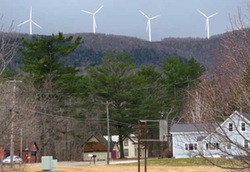 Bernie Krause’s new book, The Great Animal Orchestra, is a worthy culmination to his inquisitive career. After working out a few writerly wrinkles on a couple of earlier books that touched on aspects of his fascination with the world of natural sound, this one offers up a wide-ranging tour of our sounding world, shared in a congenial voice.
Bernie Krause’s new book, The Great Animal Orchestra, is a worthy culmination to his inquisitive career. After working out a few writerly wrinkles on a couple of earlier books that touched on aspects of his fascination with the world of natural sound, this one offers up a wide-ranging tour of our sounding world, shared in a congenial voice.
This book has rightfully garnered widespread praise, including the coveted cover spot on the NY Times Book Review section, as well as write-ups in The Washington Post, The Ecologist, The San Francisco Chronicle, and Wired. Check each of these out for good, brief glimpses into the stories you’ll find between these covers. The Wired piece is particularly well done, with many sound samples; more sounds can be heard on the site of publisher Little Brown.
Several key themes provide the foundation of the book. First and foremost is Krause’s segmentation of the soundscape into geophony (sounds of wind and water and other movement of natural objects), biophony (sounds of animals, both vocal and sounds of movement), and anthrophony (sounds of humans, especially mechanical and amplified sounds). Similar divisions are used by bioacousticians, as evidenced in a couple of talks at a recent Bureau of Ocean Energy Management workshop on sound and fish that I attended. Likewise, Bernie is an eloquent spokesman for the widespread thought that early human music has its roots in a time when tribal peoples considered themselves but one voice in a local sounding landscape; this theme is emphasized in the subtitle to the book, “Finding the Origins of Music in the World’s Wild Places.”
Krause’s reflections on our urbanized relationship to sound are grounded in the soundscape tradition of R. Murray Schaffer, while his continuing efforts to understand the dynamics and relationships in natural soundscapes – using spectrograms to illustrate possible use of acoustic niches (differences in pitch, rhythm, or time of day) that allow a plethora of creatures to each be heard within a complex biophony – are contributions to the leading edges of scientific investigation of soundscape ecology. Many reviewers note the rambling quality of the book as a small downside, but I found that it brought me as a reader into Bernie’s world, where pure wonder at the diversity of sounds crosses paths with speculative theories, sorrow at what’s disappearing, and a commitment to draw us into a deeper communion with the sounding world that surrounds us. A mindful engagement with sounds, or with the world as it is today, will inevitably bring us to such a mix of thoughts, feelings, and inquiries; this book one of the best invitations into the acoustic aspects of our times.
 The Record Hill Wind Farm has made the first of planned ongoing quarterly payments to all year-round and seasonal property owners in Roxbury, Maine. The checks, for $111.57, reflect the average cost of the power used by residents in town over the course of three months. While wind farms cannot directly supply local electricity (their power is sent into the grid, and often sold in bulk to utilities or other purchasers of electricity), this innovative program aims to give local citizens a direct benefit to compensate for wind farm’s intrusion in the local landscape.
The Record Hill Wind Farm has made the first of planned ongoing quarterly payments to all year-round and seasonal property owners in Roxbury, Maine. The checks, for $111.57, reflect the average cost of the power used by residents in town over the course of three months. While wind farms cannot directly supply local electricity (their power is sent into the grid, and often sold in bulk to utilities or other purchasers of electricity), this innovative program aims to give local citizens a direct benefit to compensate for wind farm’s intrusion in the local landscape.
 Bernie Krause’s new book,
Bernie Krause’s new book,